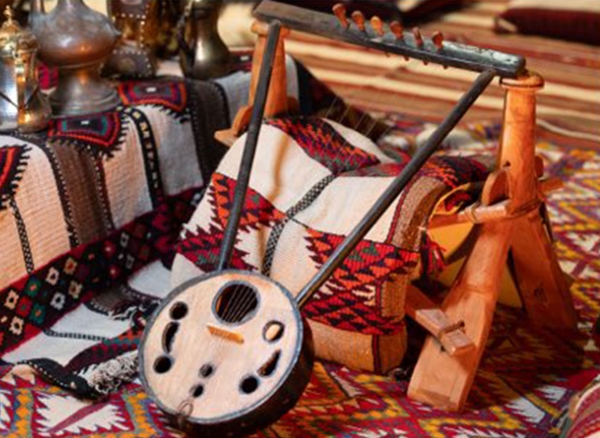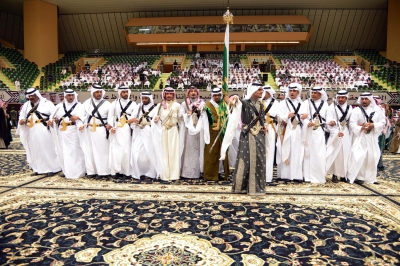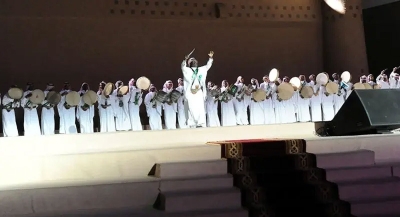
The Semsemiah Instrument is a traditional musical instrument similar to a lyre. It is used by sailors in their songs and dances on board Sanabeek and Sawa'i (sailboats and ferryboats) and became famous in Yanbu City, west of the Kingdom of Saudi Arabia. This instrument is part of Yanbu’s culture and art. The Semsemiah instrument (its manufacture and performance) was registered with the United Nations Educational, Scientific, and Cultural Organization (UNESCO) in a joint file with Egypt on December 4, 2024.
Manufacturing the Semsemiah instrument
The Semsemiah used to be made from hollowed wood covered with a thin layer of leather, onto which three equal wooden ribs were fitted in a triangular shape. On the third rib, five wooden keys would be installed, and then taut metal wires were attached and subsequently fixed to the hollow wooden piece, producing the notes during the performance.
Recently, jerrycans and olive tins, among other materials, have been introduced into its manufacturing process, due to their lightness and the strong resonance of their strings and tones.
Semsemiah player
The Semsemiah player joins a diverse musical troupe, usually situated in the middle among the other instrument players and members, all contribute by clapping, singing, chanting, and dancing to a single rhythm.
The troupe typically involves one or two Semsemiah players, each referred to as "first Marwas" and "second Marwas." They wear distinctive attire and carry certain items, such as the wrap, the sailors’ turban, the woven bag, and a stick.
The Semsemiah Dance is a calm dance performed during public and private occasions, in which the troupe showcases its singing and dancing skills.
The Semsemiah instrument is also used in other art forms, such as al-Khabeeti, which is one of the well-known arts in Makkah al-Mukarramah Province, where traditional instruments are employed, including the Semsemiah, nay, reed flute, drums, and tambourines.
Semsemiah instrument in local culture
The Semsemiah instrument is one of the traditional arts used during social occasions and celebrations in coastal regions, such as weddings and local festivals. It is played at group events where people gather to sing to its melodies and to tell stories of maritime heritage and social life, reflecting a spirit of joy and communal cohesion. It also provides an opportunity for social communication, linking generations together. The Semsemiah is tied to the artistic identity of coastal communities, as the skill of playing it is passed down from one generation to the next. It is among the arts that combine heritage and innovation in Saudi art, in addition to possessing cultural and social dimensions that have made it a living part of collective memory.
Related quizzes
Related articles


